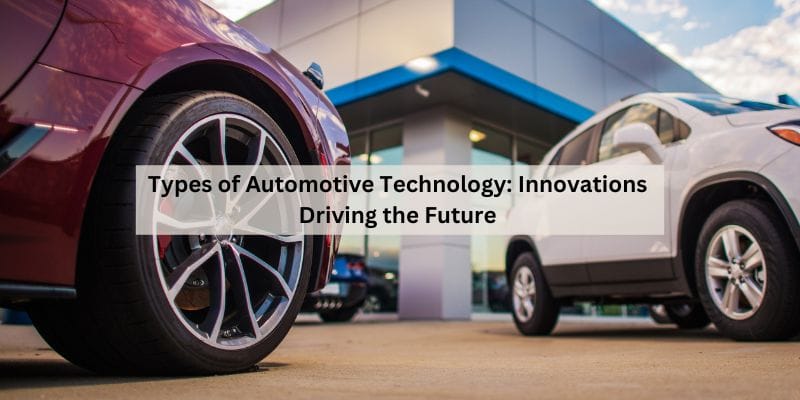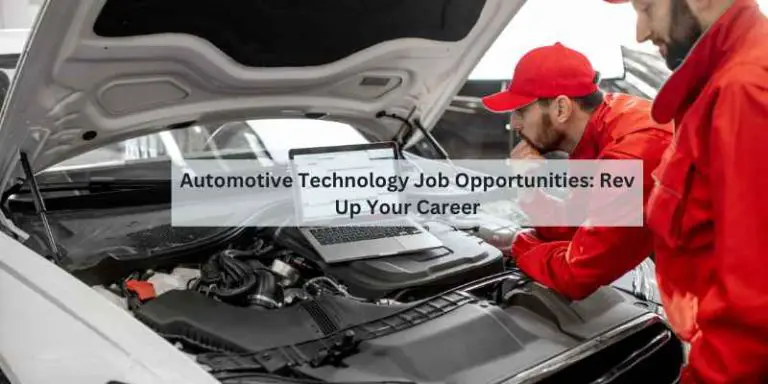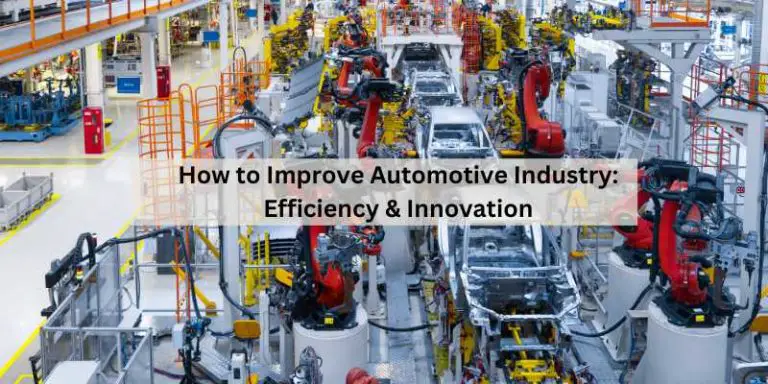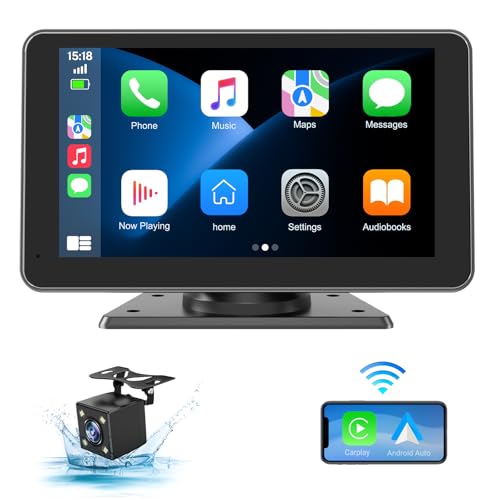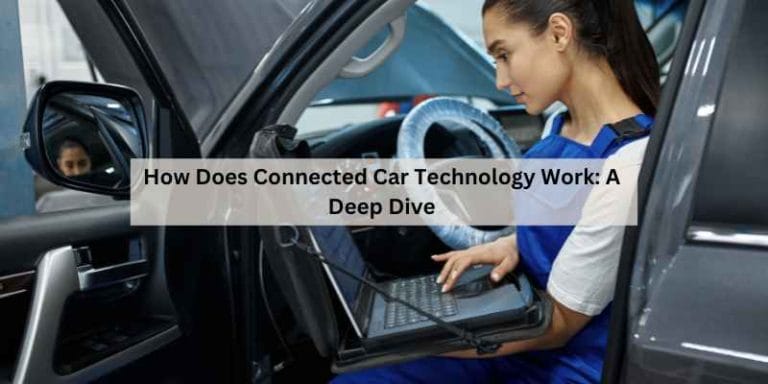Types of Automotive Technology: Innovations Driving the Future
There are various types of automotive technology, including intelligent all-wheel drive, active aerodynamics, augmented reality windshields, autonomous emergency braking, connected cars, electric vehicles, fuel cells, self-driving cars, heating, ventilation, and air conditioning systems, brakes, engine performance, automotive software, electric power systems, steering and suspension systems, and transmissions. These technologies are constantly evolving and have transformed the automotive industry.
In recent years, the integration of augmented reality (AR) and artificial intelligence (AI) has revolutionized automotive repair shops, allowing for remote diagnostics and troubleshooting. The use of AI technologies, such as machine learning and deep learning, has also become prevalent in the automotive industry.
With advancements in technology, the automotive sector continues to witness exciting innovations and advancements.
The Evolution Of Automotive Technology
The evolution of automotive technology has transformed the way we travel. From horse-drawn carriages to vehicles with immense horsepower, the industry has come a long way. The electric revolution has brought about significant changes, with the development of electric vehicles and advanced battery technology. Moreover, the integration of intelligent all-wheel drive and autonomous emergency braking has enhanced vehicle safety. Augmented reality windshields and connected cars are revolutionizing the driving experience, providing real-time information and enhancing convenience. Additionally, the use of artificial intelligence and augmented reality in automotive repair shops has streamlined the maintenance process, enabling technicians to diagnose and resolve issues more efficiently.
Electrifying The Road: Electric Vehicles (evs)
Electric vehicles (EVs) are revolutionizing the automotive industry with their battery technology and range. The advancements in battery technology have significantly increased the range of EVs, addressing one of the major concerns of consumers. Additionally, the development of charging infrastructure has made it more convenient for EV owners to recharge their vehicles, further promoting the adoption of electric vehicles.
The Rise Of Autonomous Vehicles
The rise of autonomous vehicles is reshaping the automotive industry, with cutting-edge technology such as intelligent all-wheel drive, active aerodynamics, and autonomous emergency braking paving the way for safer and more efficient transportation options. These advancements are revolutionizing the way we perceive and interact with vehicles, offering a glimpse into the future of automotive technology.
| The Rise of Autonomous Vehicles |
| Levels of automation |
| Autonomous vehicles are the future of the automotive industry. The levels of automation vary from Level 0, which is no automation, to Level 5, which is full automation. Level 1 involves driver assistance, while Level 2 offers partial automation. Level 3 vehicles have conditional automation, meaning they can operate on their own in certain situations, but still require a human driver to take over in others. Level 4 vehicles have high automation and can operate on their own in most situations, but still require a driver to be present. Finally, Level 5 vehicles have full automation and require no human input. |
| Impact on safety and mobility |
| The rise of autonomous vehicles has the potential to greatly improve safety and mobility. With advanced sensors and computer technology, autonomous vehicles can detect and avoid potential accidents, reducing the number of fatalities and injuries on the road. Additionally, autonomous vehicles can greatly improve mobility for those who are unable to drive, such as the elderly or disabled. However, there are still concerns about cybersecurity and the potential for system malfunctions. |
Connected Cars And Iot
Automotive technology encompasses the study of self-propelled vehicles and the design and remediation of vehicle technology. This can include engine and other systems, engineering, mechanics, and computer technology. The latest technology in automobiles includes intelligent all-wheel drive, active aerodynamics, augmented reality windshields, autonomous emergency braking, connected cars, electric vehicles, fuel cells, and self-driving cars. Car mechanics now utilize augmented reality (AR) and artificial intelligence (AI) for remote diagnostics and troubleshooting. The integration of these technologies allows for real-time guidance from experts located elsewhere. The Automotive Systems Technology program prepares individuals to apply technical knowledge and skills to repair, service, and maintain all types of automobiles. This includes areas such as heating, ventilation, and air conditioning, brakes, engine performance, automotive software, self-driving cars, electric power systems, and steering and suspension systems.
Advanced Driver-assistance Systems (adas)
Automotive technology refers to the creation or design of vehicle technology and the remediation or repairs required. This can involve the engine and other systems, engineering, mechanics, and computer technology. There are various types of automotive technology, including:
| Heating, ventilation, and air conditioning | Brakes | Engine performance |
| Automotive software | Self-driving car | Electric power system |
| Steering and suspension systems | Transmissions | Collision avoidance |
| Adaptive cruise control | Intelligent All-Wheel Drive | Active Aerodynamics |
| Augmented Reality Windshields | Autonomous Emergency Braking | Connected Cars |
| Electric Vehicles | Fuel Cells | The Role of Technology in Modern Car Repairs |
Car mechanics use various technologies such as augmented reality (AR) and artificial intelligence (AI) to diagnose and troubleshoot vehicles. AR technology enables remote diagnostics and troubleshooting, allowing technicians to receive real-time guidance from experts located elsewhere. The Automotive Systems Technology program prepares individuals to apply technical knowledge and skills to repair, service, and maintain all types of automobiles.
Innovations In Fuel Technology
Automotive technology is a broad field that encompasses the study of how self-propelled vehicles move, as well as the creation, design, and maintenance of vehicle technology. Innovations in fuel technology have led to the development of hybrid powertrains and hydrogen fuel cells, which have revolutionized the automotive industry. Hybrid powertrains combine a gasoline engine with an electric motor to achieve better fuel efficiency and reduce emissions. Hydrogen fuel cells, on the other hand, use hydrogen gas and oxygen to produce electricity, emitting only water vapor as a byproduct. These technologies are just some of the latest advancements in automotive technology, which also include intelligent all-wheel drive, active aerodynamics, augmented reality windshields, autonomous emergency braking, connected cars, electric vehicles, and self-driving cars.
Revolutionizing Repairs: Ai And Ar In Automotive
AI-driven diagnostics: In recent years, the integration of augmented reality (AR) and artificial intelligence (AI) has transformed the landscape of automotive repair shops. AR technology enables remote diagnostics and troubleshooting, allowing technicians to receive real-time guidance from experts located elsewhere.
AR for maintenance and training: Augmented Reality (AR) is being used for maintenance and training purposes in the automotive industry. It provides interactive guidance for maintenance procedures and offers immersive training experiences for technicians, enhancing their skills and efficiency.
Future Trends In Automotive Technology
Discover the latest trends in automotive technology, from intelligent all-wheel drive and active aerodynamics to augmented reality windshields and autonomous emergency braking. Explore the cutting-edge automotive systems technology and the use of augmented reality and artificial intelligence by car mechanics for remote diagnostics and troubleshooting.
| Sustainable Materials and Manufacturing: One of the future trends in automotive technology is the use of sustainable materials in manufacturing. The automotive industry is moving towards using eco-friendly materials such as recycled plastics, natural fibers, and bio-based materials to reduce the carbon footprint of vehicles. Manufacturers are also exploring sustainable manufacturing processes that use renewable energy sources and reduce waste and emissions. |
| The Role of 5G and Beyond: The emergence of 5G and beyond technology is set to revolutionize the automotive industry. This technology will enable faster and more reliable communication between vehicles, infrastructure, and other devices. It will also facilitate the development of autonomous vehicles, making them safer and more efficient. 5G technology will also enable real-time traffic management, reducing congestion and improving the overall driving experience. |
The future of automotive technology is exciting, with sustainable materials and manufacturing, and the role of 5G and beyond being two of the most important trends. The use of eco-friendly materials and sustainable manufacturing processes will reduce the environmental impact of vehicles, while the emergence of 5G and beyond technology will enable faster and more reliable communication between vehicles and infrastructure, making autonomous vehicles safer and more efficient. The development of 5G technology will also enable real-time traffic management, reducing congestion and improving the overall driving experience.
Frequently Asked Questions
What Is Technology In Automotive?
Automotive technology refers to the study of how vehicles move and the creation or design of vehicle technology. It involves various aspects such as engine systems, engineering, mechanics, and computer technology. Car mechanics now use advanced technologies like augmented reality and artificial intelligence for remote diagnostics and troubleshooting.
The latest automotive technologies include intelligent all-wheel drive, active aerodynamics, augmented reality windshields, autonomous emergency braking, connected cars, electric vehicles, fuel cells, and self-driving cars.
What Is The Latest Technology In Automobiles?
The latest technology in automobiles includes Intelligent All-Wheel Drive, Active Aerodynamics, Augmented Reality Windshields, Autonomous Emergency Braking, Connected Cars, Electric Vehicles, Fuel Cells, and Self-Driving Cars. Car mechanics also use augmented reality and artificial intelligence for remote diagnostics and troubleshooting.
These advancements have transformed the automotive industry.
What Is Automotive Systems Technology?
Automotive systems technology refers to the study and application of technical knowledge and skills to repair, service, and maintain all types of automobiles. It encompasses various aspects such as engine and other systems, engineering, mechanics, and computer technology. Car mechanics also utilize advanced technologies like augmented reality and artificial intelligence for remote diagnostics and troubleshooting.
Overall, automotive systems technology plays a crucial role in the design, operation, and maintenance of vehicles.
What Technology Do Car Mechanics Use?
Car mechanics use a variety of technologies in their work. This includes augmented reality (AR) and artificial intelligence (AI) for remote diagnostics and troubleshooting. They also utilize computer technology, engine systems, and engineering knowledge to repair and maintain vehicles. The automotive industry is constantly evolving with advancements like intelligent all-wheel drive, connected cars, and electric vehicles.
Conclusion
The automotive industry has witnessed significant advancements in technology, revolutionizing the way vehicles are designed, manufactured, and maintained. From intelligent all-wheel drive and augmented reality windshields to self-driving cars and connected vehicles, automotive technology continues to evolve. Mechanics now utilize augmented reality and artificial intelligence for remote diagnostics and troubleshooting, enhancing efficiency and accuracy in repairs.
With advancements like advanced driver assistance systems and hybrid powertrains, the future of automotive technology looks promising. Stay updated on the latest developments to make informed decisions about your automotive needs.

